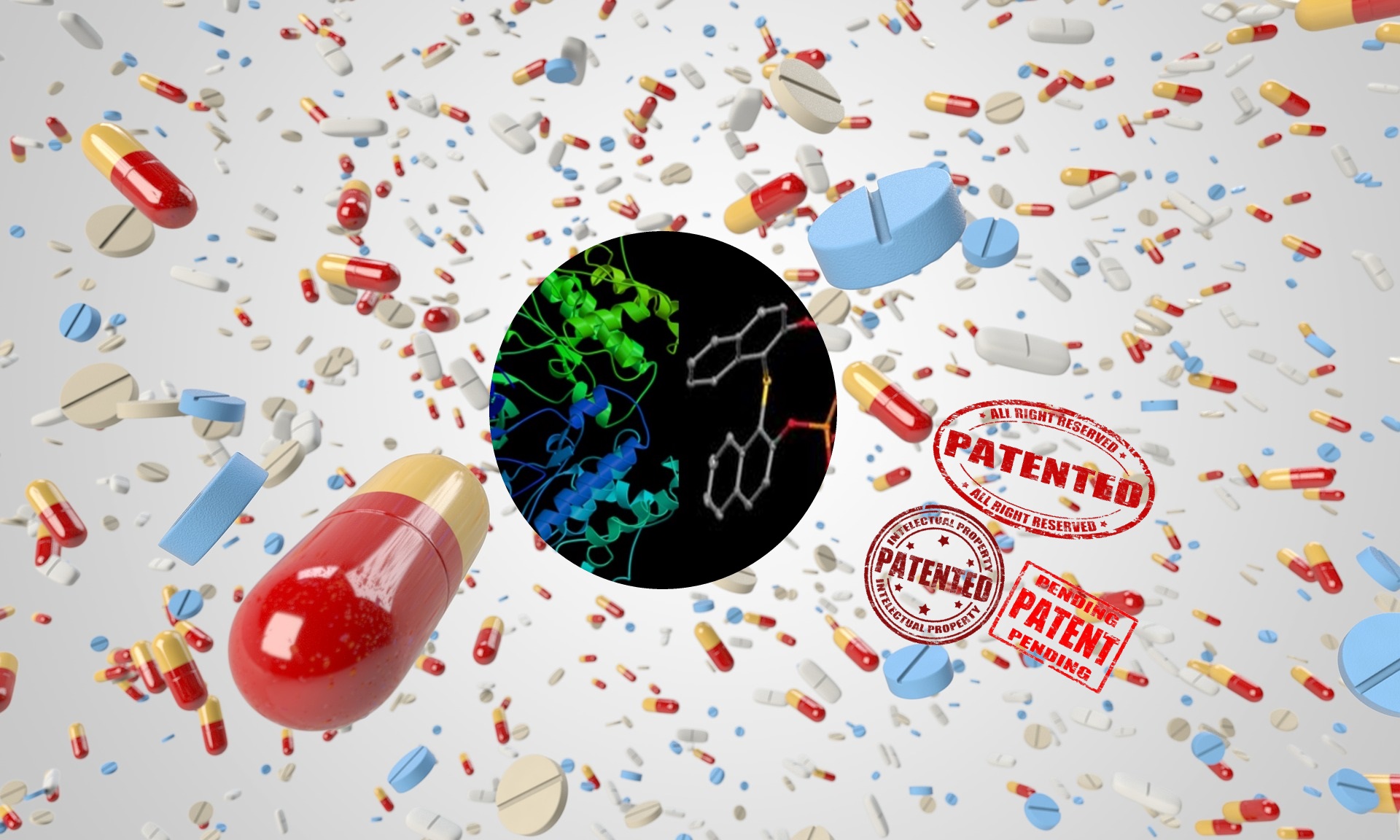The innovative research undertaken at the Institute has led to significant achievements and a number of patents. The novel compounds and methods have high value as drug candidates and research tools that have significant scientific and economic impacts. Listed below are some of the granted patents:
Heterodimers & methods of using them (US 7,605,265; GB 2459598; HK1138832; ZL200880002775.5)
Heterodimers, consisting of different chemical moieties and linkers, have been synthesized using the concept of structure-based drug design to develop more potent and selective compounds with therapeutic neuro-enhancing properties. The synthetic heterodimers enhance brain cognition and prevent glutamate-associated neurodegeneration by inhibiting the activity of the enzyme acetylcholinesterase and the N-methyl-D-aspartate (NMDA) receptor, respectively. By possessing two key mechanisms of activity, heterodimers represent a new generation of therapeutic agents for neurodegenerative diseases such as Alzheimer’s disease.
NMDA and MC receptor antagonists exhibiting neuroprotective and memory enhancing activities (GB2462235; HK1140209; US 8642567; US 8637474; ZL 200880021517.1)
This group of novel compounds is based on a derivative from a TCM herb, and has been shown to inhibit NMDA and melanocortins (MC) receptor-mediated excitotoxicity. They are effective in improving learning and memory, and confer neuroprotection under oxidative stress. These NMDA and MC receptor antagonists have significant therapeutic potential in the treatment of neurodegenerative diseases such as Parkinson’s disease and Alzheimer’s disease.
Isoquinolone compounds as subtype-selective agonists for melatonin receptors MT1 and MT2 (US 8389544, ZL200780050054.7)
Over 580 derivatives with distinctive structural features have been synthesized based on natural single compounds isolated from TCMs. Compounds mimicking the actions of melatonin, but with high affinity and selectivity towards one subtype of melatonin receptor, have been identified. They are novel non-indoleamine-based heterocyclic derivatives exhibiting previously unreported receptor subtype-selective melatoninergic activity. Structure-activity relationship analyses of selected series of compounds have been conducted to obtain valuable information for further development of more selective and metabolically stable compounds, which could potentially be used for treating insomnia, cancer and neurodegenerative diseases.
Triterpenoid compounds and methods of use thereof (GB 2474813; HK 1153203; US 9029414; ZL 200980136758.5)
A series of compounds have been synthesized based on derivatives isolated from a TCM herb. They are found to modulate the NMDA receptor as well as interact with prostaglandin E2 receptors. Through preliminary structure-activity relationship analysis, a few lead candidates exhibiting bioactivities of interest have been identified. The results of a range of in vitro and in vivo studies have shown that these compounds possess both neuroprotective and anti-inflammatory properties which may have therapeutic applications over a range of neurological disorders.
Oxazolidine derivatives as NMDA antagonists (GB 2470495; HK 1151025; US 8722714; ZL200980109313)
A new group of synthetic compounds has been developed from derivatives isolated from a botanical source. These compounds exert their actions by inhibiting the NMDA receptor. Preliminary animal studies have demonstrated the neuroprotective and anti-depressive properties of the lead candidates. These NMDA receptor antagonists could be developed into potential therapeutic agents for acute and chronic disorders of the central nervous system.
G protein (US 6,462,178)
The researchers at BRI discovered novel guanine nucleotide-binding protein (G protein) chimeras, which facilitate the identification of orphan receptors as potential drug targets. As G proteins are membrane-associated proteins that transduce signals from G protein-coupled receptors (GPCRs) to various intracellular effectors, drug discovery programs world-wide have collectively generated more than 200 novel drugs that possess activity or antagonizing properties towards GPCRs. As a result of the proven link of GPCRs to a wide variety of diseases and the historical success of drugs that target these receptors, characterization of orphan GPCRs are among the most promising molecular targets for future drug discovery platforms. Therefore, the identification of the novel G protein ligands could play an important role in the validation of orphan receptors as possible drug targets, thereby accelerating the discovery of novel therapeutics.
Cdk5-specific inhibitory peptides (US 6,693,166)
This patent relates to the identification and characterization of a cyclin-dependent kinase (Cdk) inhibitory peptide, which inhibits Cdk5 and Cdk2 in a non-competitive manner. This neuronal Cdk5 activator (Nck5a)-derived peptide is the first reported inhibitory peptide of Cdk5. With specific inhibitory effect against Cdk5 and Cdk2, this peptide possesses important and valuable implication as a scientific tool to support biomedical research in cell cycle regulation. It can also be further developed into potential drugs targeting Cdk5/Cdk2 inactivation.
p35 nck5a binding proteins (US 6,753,413)
p35 nck5a is a neuronal-specific protein which forms an active kinase with a catalytic subunit named Cdk5. The p35 nck5a /Cdk5 complex is involved in the regulation of neuronal differentiation and neuro-cytoskeleton dynamics, and it appears that the level of regulation is revealed by the fact that Cdk5 is present in excess of its activators. BRI’s researchers have succeeded in isolating three novel p35 nck5a binding proteins. The discovery of the binding proteins in the macromolecular protein complex can be used as tools to analyze how p35 nck5a interacts with other proteins and its effect on Cdk5 activity.
Other Granted Patents include:
- STAT2 and TYK2 as drug targets for neurodegenerative diseases (GB 2473579; HK 1153271; ZL200880130414.9; US 9134327 )
- Neuroprotective effects of Adelostemma Gracillum and its isolated compounds (US 9150608)
- Dimeric compounds (US 6,472,408; GB 2360518)
- Pulmonary drug delivery system (US 5,451,569)
- DNA sequence for encoding a retinoic acid regulated protein (US 7,276,595)
- Fritillaria species identification (US 6,569,625)
- Neurotrophin NT-7 from carp (US 7,022,670)
- Cellobiase obtained from cellulomonas biazotea (GB 2289050)
- A rapid test kit for typhoid fever (US patent design 367,932; UK registered design 2,037,508; Australian patent 640346)

